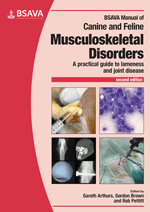
Full text loading...

Combining correct technique with selection of appropriate instrumentation helps optimize access to, and observation of, the anatomical structures within the surgical site. This chapter covers the instrumentation most commonly used in small animal orthopaedics as well as a selection of widely used basic implants.
Surgical instruments and implants, Page 1 of 1
< Previous page | Next page > /docserver/preview/fulltext/10.22233/9781910443286/9781910443286.14-1.gif

Full text loading...



















































